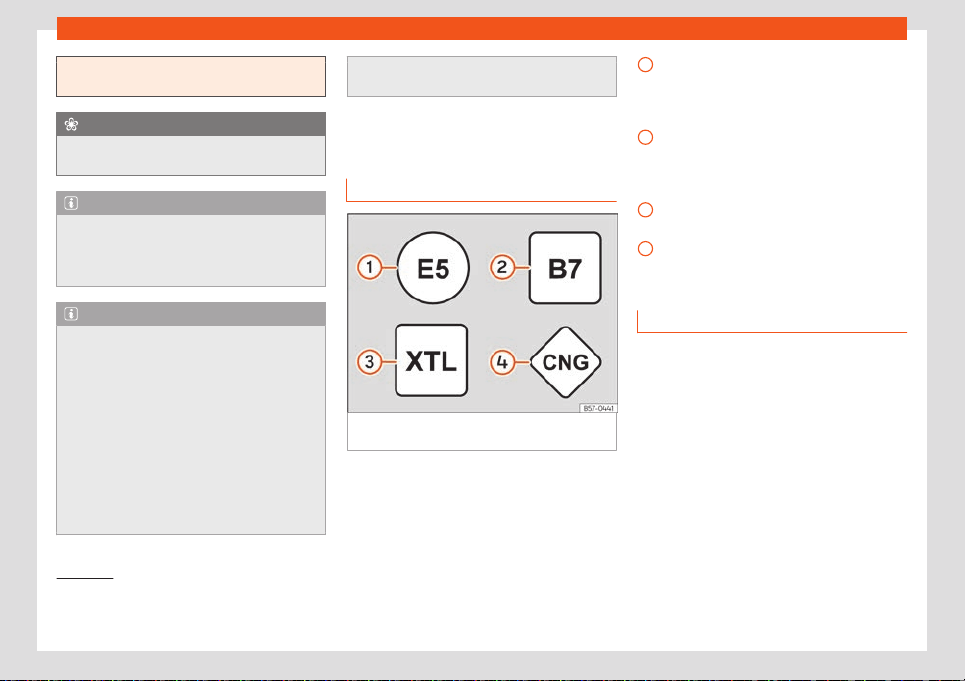Loading ...
Loading ...
Loading ...

Practical tips
take longer than normal (up to one minute)
t
o start firing.
For the sake of the environment
Do not overfill the fuel tank, it may cause
the fuel t
o overflow if it becomes warm.
Note
There is no emergency mechanism for the
manual r
elease of the fuel tank flap. If nec-
essary, request assistance from special-
ised personnel.
Note
Diesel vehicles are fitted with a protective
de
vice that prevents the insertion of the
wrong fuel hose
1)
. It is only possible to re-
fuel with Diesel nozzles.
●
If the pump nozzle is worn, damaged, or if
it is very small, it is possible that it will not
be able to open the protective device. Be-
fore trying to insert the pump nozzle by
turning it, try a different pump or request
specialist help.
●
If you fill the tank from a reserve fuel can-
ister, the protective device will not open.
One way to resolve this is to pour the fuel in
v
ery slowly.
Fuel types
Identification of fuel
s
1)
Fig. 282 Identification of fuels according to
Eur
opean Union (EU) Directive 2014/94/
Fuels are identified by different symbols on
the pump and on your v
ehicle's tank flap. The
identification serves to prevent confusion
when choosing the fuel.
Petrol with ethanol (“E” stands for Etha-
nol). The number indicates the percent-
age of ethanol in the petrol. “E5” means,
for example, an ethanol ratio of 5% max.
Diesel according to EN590 standard. The
number indicates the maximum percent-
age of Biodiesel in the fuel. “B7” means a
maximum of 7% Biodiesel.
Synthetic diesel according to EN15940
standard.
Natural gas: “CNG” means Compressed
Natural Gas.
Type of petrol
3 V
alid for: vehicles with petrol engines
The correct grade of petrol is listed inside the
fuel tank flap.
The vehicle is equipped with a catalytic con-
verter and must only be run on unleaded
petrol. The petrol must comply with the
standard EN 228 and be sulphur-free. Fuels
with a 10% ethanol ratio can be refuelled
(E10)
2)
. The types of petrol are differentiated
by using the octane numbers (RON) or via
the anti-knock index (AKI).
1
2
3
4
1)
Depending on country
2)
Follow the regulations of the country you are
driving in.
312
Loading ...
Loading ...
Loading ...